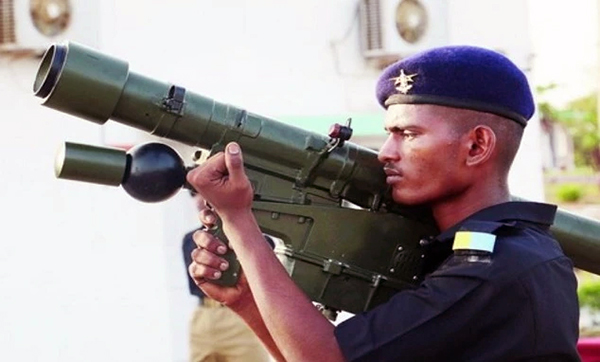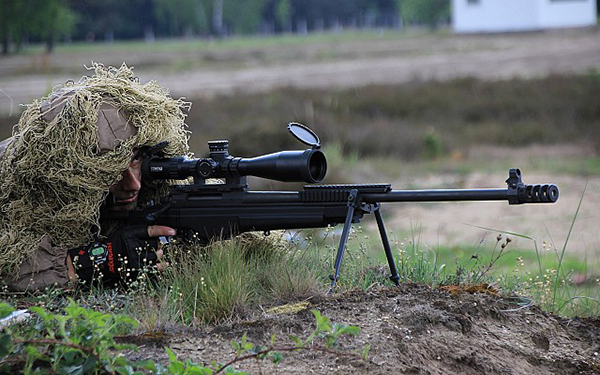The Defence Acquisition Council (DAC), on 22 March, accorded Acceptance of Necessity (first step of procurement) for the indigenously designed, developed and built GSAT 7B, which will be a state-of-the-art, multiband, military-grade satellite for the Army.
When launched, this will be the Army’s first exclusive communication satellite that will act as a force multiplier and fail-safe communication support to the force as it moves deeper into network-centric warfare scenario.
The GSAT 7B satellite, which has been a long pending demand of the Army, will be launched in the next two-three years and provide integrated communication, not just within the force but also the other two Services — Navy and Air Force.
The satellite will cost Rs 4,635 crore and there would be two units of it. One would be operationalised in space while the other would be on ground, sources said.
The Army is also looking at procuring satellite-linked drones and having a dedicated satellite will be key for operations.
In November last year, the DAC cleared an Indian Air Force (IAF) proposal for the GSAT-7C satellite.
Currently, the force uses GSAT-7A (also known as ‘Angry Bird’), which was launched in 2018. While this is a dedicated satellite for the IAF, the Army uses about 30 per cent of its capacity.
The satellite connects various IAF platforms like aircraft, choppers, drones, airborne early warning and control system and radars, among others. This was the second dedicated satellite for the Indian military after the GSAT-7, which was launched in 2013 for the Navy.
Known as Rukmini, the GSAT-7 is the primary communication link for all naval operations.
India uses its own satellites and those of friendly nations, besides commercial ones, to keep track of developments at its borders, especially the Line of Actual Control (LAC) with China.
In February this year, the Polar Satellite Launch Vehicle (PSLV)-C52 successfully launched EOS-04 Satellite, an earth observation system, from the Satish Dhawan Space Centre, Sriharikota.
As warfare becomes increasingly tech-oriented, with seamless and secure networked communication being a key element, multiple satellites are required in the next two-three years.
This is not the first time that ISRO’s capabilities are being used by the government department for high-tech surveillance. Previously, in a bid to keep an eye out on the oil and coal theft from freight trains, the Indian Space Research Organization (ISRO) has come out with its latest technology to keep a check in this regard. The latest surveillance technology will also be used to monitor the movement of passenger trains giving another boost to their safety.
Before the freight monitoring satellite, ISRO had successfully launched earth observation satellite RISAT-2B. The satellite would be instrumental in enhancing India’s surveillance capabilities.
This satellite replaced RISAT-2 which was launched in 2009. RISAT-2B is going to be a big boost as far as India’s surveillance capabilities are concerned. The satellite is going to be equipped with synthetic aperture radar and is capable of taking pictures of the earth day and night.
It will also be able to take pictures during cloudy circumstances. This satellite will have a mission life of five years, ISRO sources have said that it would also be used for military surveillance. It must be noted that RISAT-2 had also been used extensively to monitor terror camps situated in Pakistan and to block infiltration bids. When RISAT-2 was launched, it was seen as a major achievement of India placing it in a group of limited nations possessing the capability to use satellite technology for passive military use. Ten years later, India has further improved its technological prowess and has launched an even more effective satellite greatly boosting its monitoring and surveillance capabilities.
The ISRO satellites have become the biggest tool for monitoring against anti-social elements and surveillance tools against enemy countries.
Russian MANPADS Inducted
The Army, which has for long been looking for new man portable air defence systems, has inducted a small number of Igla-S systems recently bought from Russia under emergency procurement, according to defence sources. However, a much larger contract for Igla-S systems under the Very Short Range Air Defence System (VSHORAD) deal is still pending and under review by the Defence Ministry.
The contract was signed in December 2020 and the equipment was delivered by December 2021. This includes 24 launchers, 216 missiles and testing equipment.
The procurement was done through the Vice Chiefs emergency financial powers given to the Services for the first time after the Balakot air strike in February 2019 and further extended after the standoff with China in Eastern Ladakh in May 2020. Under this, Services can procure weapons systems up to Rs 300 crores on an urgent basis without any further clearances.
In the backdrop of the Russian special military operation in Ukraine and the Western sanctions, India and Russia are working out modalities to utilise the Rupee-Rouble route in a large way for trade and payments. The Ministry is also assessing the impact it would have on the timely execution of deals as well as steady supplies of spares and support.
The larger VSHORAD deal which began in 2010 and saw several rounds of trials and re-trials is still pending. This deal which was close to conclusion is now under review as part of the overall relook at all direct import deals by the Defence Ministry. Deliberations are still continuing on the larger VSHORAD deal.
The Request for Proposal (RFP) for VSHORAD was issued in October 2010 for over 5,000 missiles, 258 single launchers and 258 multi-launchers. Five contenders responded and eventually three made it to the trials – MBDA of France, Rosoboronexport of Russia and SAAB of Sweden. Eventually all three companies were declared technically compliant in 2017 and Igla-S was declared the lowest bidder in November 2018.
While the benchmark price arrived at by the Army was just over $2 bn, Rosoboronexport’s bid was much lower at around $1.47 bn, SAAB at about $2.6 bn, and MBDA at about $3.68 bn. This led to much deliberation within the Ministry as the Russian bid was much lower compared to the benchmark price. The deal also saw several allegations of deviations in procedures with some of the vendors sending protest letters.
As per requirements, the VSHORAD should have a maximum range of 6 km, altitude of 3 km along with all-weather capability and will replace the existing Igla in service which is in urgent need of replacement. VSHORAD is the soldier’s last line of defence against enemy combat aircraft and helicopters in the multilayered air defence network.
In addition to the Igla-S, the Army variant of the Medium Range Surface to Air Missile (MRSAM) being jointly developed by the Defence Research and Development Organisation (DRDO) and Israel Aerospace Industries (IAI) completed trials earlier this month and is now ready for induction. The maiden launch of MRSAM Army Version was conducted in December 2020.
Air Defence functions in three levels – gun/missile system, medium range, and high range. Within this the Air Defence guns are of two types, AD Gun Missile system, AD self propelled guns. The Army is looking for AD guns in both the categories. In the medium segment, it has the indigenous Akash SAM while MRSAM fits in the high range.
MRSAM System Completes Development Trials
Medium Range Surface-to-Air Missile (MRSAM) Army weapon system has proved its effectiveness as two missiles, during the flight tests, achieved direct hits against high speed aerial targets at Integrated Test Range, Chandipur off the coast of Odisha on March 30, 2022.
On March 27, 2022, the missile system was successfully flight tested twice against high-speed aerial targets for different ranges as part of the live firing trials.
The launches were carried out establishing the accuracy and reliability of the weapon system against targets covering the sea skimming and high altitude functionality within the envelope. Performance of all weapon system components including missile, weapon system radar and command post have been validated during these trials. With the conclusion of flight trials for different ranges and scenarios, the system has completed its development trials.
Finnish Sako TRG-42 Rifles Inducted
The Indian Army has inducted the Sako .338 TRG-42 sniper rifles from Finland for troops deployed along the Line of Control (LoC) in Jammu and Kashmir.
Most of the special forces across the world use .338 Sako TRG 42 sniping rifle and Indian Army has procured it.
Sako .338 TRG-42 sniper rifles have a better range, firepower, and telescopic sights than those possessed by the adversary.
Amid a change in operational dynamics along the LoC, the move is to make the snipers more lethal.
The Sako rifles have reportedly replaced the .338 Lapua Magnum Scorpio TGT by Beretta, and the .50 Calibre M95 by Barrett, which were inducted in the Indian army in 2019 and 2020.
These rifles – made in Italy and America – had replaced the ageing Russian Dragunov, the mainstay of Indian troops.
First procured in the 1990s, the Dragunovs have slowly fallen behind contemporary sniper rifles which offer improved sights and mounts, increased accuracy, and a strike range of over 1 kilometre.
The Sako TRG-42 sniper rifle is a bolt-action sniper rifle designed and developed by the Finnish gun maker SAKO.
The rifle is designed to fire powerful .338 Lapua Magnum-sized cartridges. and weighs at 6.55 kgs without ammunition. It has an effective range of 1,500 metres.
The rifle is considered one of the most accurate and trustworthy weapons gobally.
Sniping has been a bigger challenge for the soldiers patrolling forward areas along the LoC and the International Border (IB) in Jammu and Kashmir.
Between 2018 and 2019, there was a sudden increase in the number of sniping incidents along the LoC and IB prompting armed forces to induct better sniper rifles and train its snipers against such attacks.



















